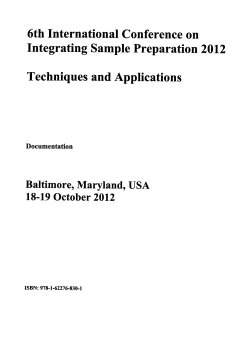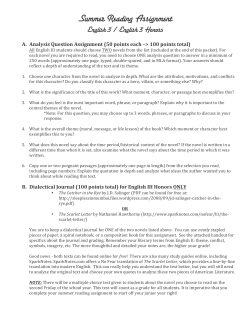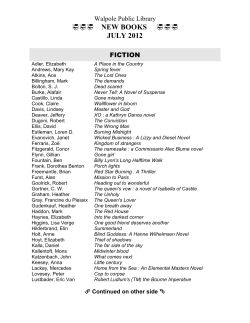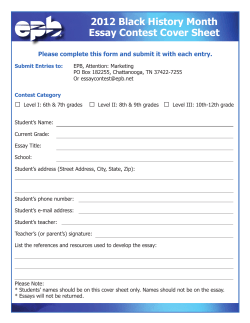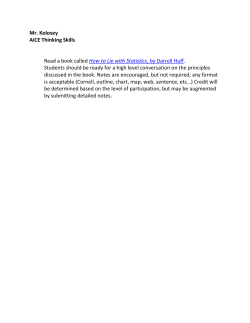
English 1 (#1001310)
English 1 (#1001310) The purpose of this course is to provide English 1 students, using texts of high complexity, integrated language arts study in reading, writing, speaking, listening, and language for college and career preparation and readiness. GENERAL NOTES The content should include, but not be limited to, the following: • • • • • active reading of varied texts for what they say explicitly, as well as the logical inferences that can be drawn analysis of literature and informational texts from varied literary periods to examine: o text craft and structure o elements of literature o arguments and claims supported by textual evidence o power and impact of language o influence of history, culture, and setting on language o personal critical and aesthetic response writing for varied purposes o developing and supporting argumentative claims o crafting coherent, supported informative/expository texts o responding to literature for personal and analytical purposes o writing narratives to develop real or imagined events o writing to sources using text- based evidence and reasoning effective listening, speaking, and viewing strategies with emphasis on the use of evidence to support or refute a claim in multimedia presentations, class discussions, and extended text discussions collaboration amongst peers Instructional Practices: Teaching from well-written, grade-level instructional materials enhances students’ content area knowledge and also strengthens their ability to comprehend longer, complex reading passages on any topic for any purpose. Using the following instructional practices also helps student learning. 1. Reading assignments from longer text passages, as well as shorter ones when text is extremely complex. 2. Making close reading and rereading of texts central to lessons. 3. Asking high-level, text-specific questions and requiring high-level, complex tasks and assignments. 4. Requiring students to support answers with evidence from the text. 5. Providing extensive text-based research and writing opportunities (claims and evidence). Instructional Materials: SpringBoard® is the foundational component for the College Board's College Readiness System, offering a proven Pre-AP program that increases participation and prepares a greater diversity of students for success in AP, college and beyond – without remediation. For an overview of the content of the materials central to study in the English 1course, please click the following link: SpringBoard Grade 9 Video Pacing Highlights: The thematic focus of study throughout English 1 is Coming of Age. Highlights of instruction are outlined below, and though instruction may vary by classroom, a tentative timeline is provided for informational purposes. First 9 Weeks Unit / Essential Questions Core Text Unit 1 What does it mean to Coming of Age “come of age”? Embedded Assessments EA 1: Writing and Presenting an Interview Narrative How are rhetorical Independent reading novels appeals used to influence an audience? (Novel) EA 2: Writing an Argumentative Essay Unit Goals To understand the concept of coming of age To identify diction, syntax, imagery, and tone-‐-‐and to understand the way they work together to convey an author’s or speaker’s voice To incorporate voice effectively in one’s own writing To support an inference or claim using valid reasoning and relevant and sufficient evidence To analyze and use rhetorical appeals and evidence to present an argument to an audience Second 9 Weeks Unit / Core Text Unit 2 Defining Style Edward Scissorhands (Film) Unit 3 Coming of Age in Changing Times To Kill a Mockingbird (Novel) Essential Questions What makes a good story? Embedded Assessments EA 1: Writing a Short Story What are the elements of EA 2: Writing a style analysis? a Style Analysis Essay What impact does EA 1: Historical context have on a novel Investigation and and on the reactions of Presentation readers to it? Unit Goals To identify specific elements of an author’s style To develop close reading skills To review and analyze elements of fiction and write a short story To identify cinematic techniques and analyze their effects To gather and integrate relevant information from multiple sources in order to answer research questions To present findings clearly, concisely, and logically, making strategic use of digital media Third 9 Weeks Unit / Core Text Essential Questions Embedded Assessments Unit Goals Unit 3 Coming of Age in Changing Times To Kill a Mockingbird (Novel) (Continued) How does a key scene from a novel contribute to the work as a whole? EA 2: Writing a Literary Analysis Essay To analyze how literary elements contribute to the development of a novel’s themes To write a literary analysis, citing textual evidence to support ideas and inferences Unit 4 Exploring Poetic Voices What is Poetry? EA 1: Creating a Poetry Anthology To develop the skills and knowledge to analyze and craft poetry To analyze the function and effects of figurative language To write original poems that reflect personal voice, style, and an understanding of poetic elements To write a style analysis essay To present an oral interpretation of a poem Selected Poems What can a writer learn from studying an author’s EA 2: Analyzing craft and style? and Presenting a Poet Fourth 9 Weeks Unit / Core Text Unit 5 Coming of Age on Stage Romeo and Juliet (Drama) Essential Questions How do actors and directors use theatrical elements to create a dramatic interpretation? Why do we study Shakespeare? Embedded Unit Goals Assessments EA 1: Presenting a To cite textual evidence to support analysis of a dramatic text Dramatic To analyze the representation of key scenes in text, Interpretation film, and other mediums To collaborate with peers on an interpretive EA 2: Writing a performance Synthesis To conduct research to answer questions and gather Argument evidence To analyze how an author uses rhetoric to advance a purpose To write an argument to support a claim
© Copyright 2025



